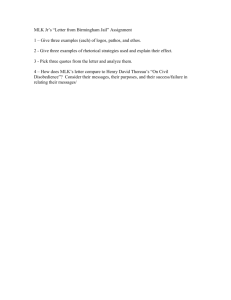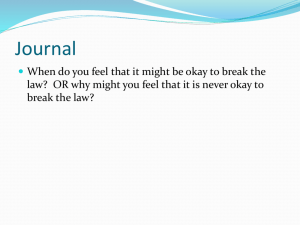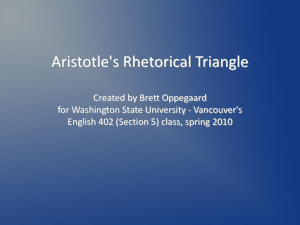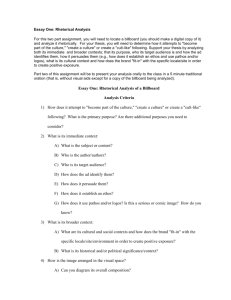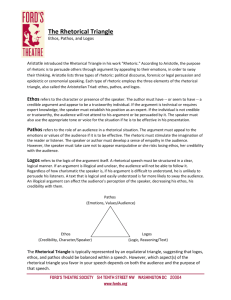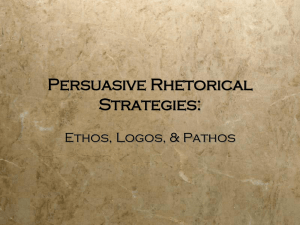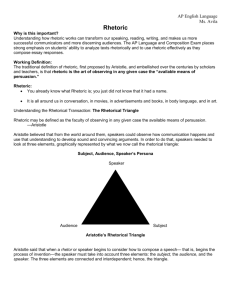The Rhetorical Triangle or Aristotelian Triad The Rhetorical Triangle
advertisement
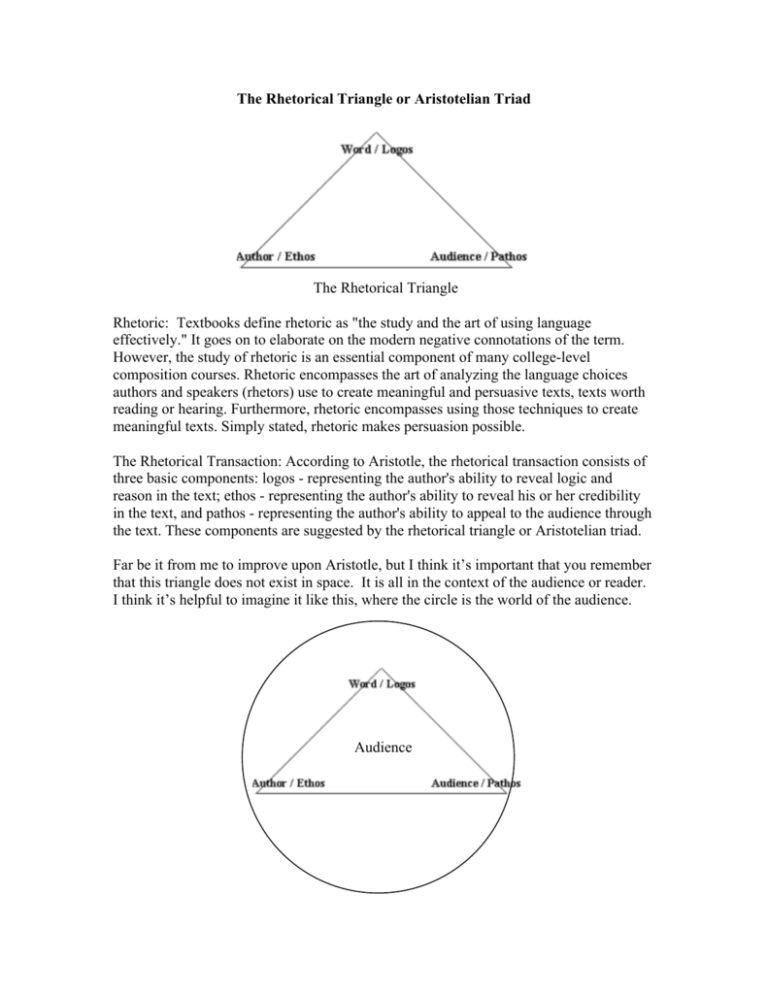
The Rhetorical Triangle or Aristotelian Triad The Rhetorical Triangle Rhetoric: Textbooks define rhetoric as "the study and the art of using language effectively." It goes on to elaborate on the modern negative connotations of the term. However, the study of rhetoric is an essential component of many college-level composition courses. Rhetoric encompasses the art of analyzing the language choices authors and speakers (rhetors) use to create meaningful and persuasive texts, texts worth reading or hearing. Furthermore, rhetoric encompasses using those techniques to create meaningful texts. Simply stated, rhetoric makes persuasion possible. The Rhetorical Transaction: According to Aristotle, the rhetorical transaction consists of three basic components: logos - representing the author's ability to reveal logic and reason in the text; ethos - representing the author's ability to reveal his or her credibility in the text, and pathos - representing the author's ability to appeal to the audience through the text. These components are suggested by the rhetorical triangle or Aristotelian triad. Far be it from me to improve upon Aristotle, but I think it’s important that you remember that this triangle does not exist in space. It is all in the context of the audience or reader. I think it’s helpful to imagine it like this, where the circle is the world of the audience. Audience The Reader's Rhetorical Triangle Logos • Note the claims the author makes, the exigence (a difficult situation requiring urgent action) • Note the data the author provides in support of the claims. • Note the conclusions the author draws. Ethos • Note how the author establishes a persona • Note how the author establishes credibility • Note any revelation of the author's credentials or personal history Pathos • Note the primary audience for the text • Note the emotional appeals the author makes • Note the author's expectations of the audience When reading nonfiction, note the language the author uses to establish logos, ethos, and pathos. The Writer's Rhetorical Triangle Logos • Have I established the purpose for my text, and have I utilized the most effective genre? • Have I established a clear, reasonable, and logical progression of my ideas? • Have I addressed opposing arguments or perspectives? Ethos • Have I established the appropriate persona? • Have I established my credibility? • Have I expressed my knowledge and expertise of the topic? Pathos • Have I considered the primary audience, the background they have? • Does my audience agree with me or will I have to persuade them of the validity of my argument? • How will I make my text appeal to my audience? When crafting nonfiction, carefully consider the language choices you will use to establish logos, ethos, and pathos.



